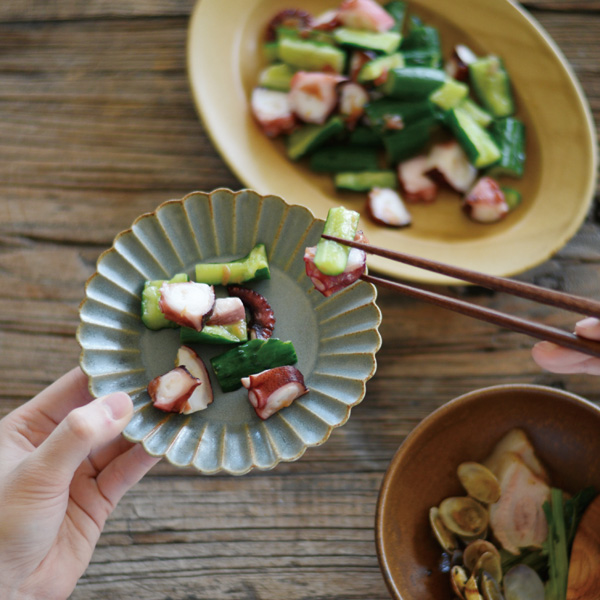当日発送について
以下の条件に該当するご注文を当日配送いたします。
・平日(営業日)の12時までにご注文が完了。
・ご注文いただいた商品の在庫がすべてある場合。
・お支払方法がクレジットカード決済か代引きの場合。
※受注状況や確認事項の有無などにより、お時間をいただく場合がございます。
※12時以降のご注文は最短で発送いたします。
定休日のご案内
土日祝日、お盆、年末年始などは出荷業務をお休みいたします。
Now Loading...
以下の条件に該当するご注文を当日配送いたします。
・平日(営業日)の12時までにご注文が完了。
・ご注文いただいた商品の在庫がすべてある場合。
・お支払方法がクレジットカード決済か代引きの場合。
※受注状況や確認事項の有無などにより、お時間をいただく場合がございます。
※12時以降のご注文は最短で発送いたします。
土日祝日、お盆、年末年始などは出荷業務をお休みいたします。
鴨肉の料理を美味しく食べたい、そのための器として企画・デザインされた「バルバリ」。
商品名の「バルバリ」はその鴨の品種に由来しており、裏印にはちょっとした遊び心で鴨の絵が施されています。

サイズは メインプレート / パンプレート / コガモプレート / ココガモプレート の4サイズで、雰囲気の異なる3色展開です。
鴨肉のソテーやグリルを盛り付けるイメージのメインプレート。
日本の家庭ではあまりメジャーではない鴨肉料理ですが、生姜焼きやハンバーグ、から揚げなど、
主役となる料理にちょうど良いサイズです。
平らな面 ( 約18cm ) が広いため盛り付けしやすいのもポイントです。

パンプレートはその名の通り、トーストが1枚のるくらいのサイズ。
平らな面は約13.5cmで、プレートにしっかりと収めるならば角食パンがおすすめです。

コガモプレートは取り皿やデザートプレートにおすすめ。
平らな面が約9cmなので、デザートならばプリンや焼き菓子、小さめ(5号以下)のカットケーキにちょうどよいサイズです。

ココガモプレートは平らな面は約6cmで、タレや醤油、お漬物や薬味におすすめです。

料理がより美味しそうに見えるように、バランスよく盛り付けやすいように、
サイズやデザインを熟慮して作られたバルバリは、どんなジャンルの料理にも合う日常使いの器です。